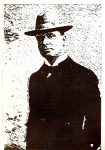
Minnie had decided that all twenty-six mourners would attend the funeral bedecked in costumes made entirely of feathers. All feathers are made alike in their general form, although they differ greatly in size, strength, and colour.
Each one has a quill, or barrel, a shaft, and a vane, beard, or web. The quill is a hollow horny tube, made of hardened albumen. It has an opening at the bottom, and one where it joins the shaft, and has inside a thin dry core. The shaft is smaller and longer than the quill, and is nearly flat on each of its four sides. It is made of a white spongy substance called the pith, covered with a thin horny sheath. The vane or beard, which is in two parts, one on each side of the shaft, is formed of many small flat plates or scales, which grow out of the sides of the shaft, and lie with their flat sides close to each other. These sides have along their upper edges little hooks, or barbules, by means of which they hold fast to each other, so that the surface of the beard is close and smooth and does not open when the bird is flying.
In some birds, like the ostrich, these barbules do not hook very tightly together, and this makes their feathers more soft and plumy than those of other birds. At the bottom of the beard, next to the quill, there is usually a small feathery tuft called the plumule, or accessory plume. Besides the feathers, many birds have next to the skin a soft fleecy covering called down, which is made up of very small feathers.
Feathers grow very fast, and almost all birds change them every year. Feathers vary in size and in form in different parts of the body, and have received different names from those who write about birds. Most birds have a small gland, or kind of bag, at the base of the tail, from which they squeeze out oil with their bill, and spread it over their feathers. This is partly the reason why birds’ feathers shed water.
Of ornamental feathers, those of the ostrich are most prized, especially the large white plumes from the back and tail of the male bird. But many other birds, such as the peacock, swan, turkey, pheasant, cock, heron, egret, osprey, eagle, ibis, rhea, emu, adjutant, grebe, marabout, stork, and widgeon yield feathers which are used in ornament.
In preparing feathers for use, they are tied up in bundles and washed in warm soap and water to free them from grease. The soap is then rinsed out in clean hot water, and they are then plunged into boiling water into which a few drops of saffron distillate have been mixed. After further rinsing, they are drawn quickly through cold water with a mixture of a little ground agaric, and are then steamed over sulphur fumes and dried. The shafts are scraped to make them limber, and the filaments or feathery parts are patted gently with special light-weight hammers.
Minnie had wheelbarrow-loads of feathers delivered to her apartment by a team of feather-gatherers drawn from different bird-houses scattered throughout the town. Working like a drudge, she made all the costumes herself, scarcely pausing to sleep. As each costume was finished, Bruno packed it into a large cardboard packet and delivered it personally to the recipient. In turn, at intervals of a few hours, Aminadab, Bewg, Chodd, Darningneedle, Eck, Freakpit, Gum, Dr Hoist and the others answered their doors to find the terrifyingly pale figure of Bruno standing before them, the packet in one hand and an invitation to the funeral in the other.
Minnie had commissioned a rancorous Stalinist hobbledehoy to illuminate the invitations. Josef Megrimovitch Bong lived in a pigeon-loft above one of the finest houses in the town, and seemed to subsist on a diet of rusks, mugwort, and tap water. His creaking, spavined frame, clad in a muddy black cape, was often seen stalking aimlessly along the boulevards, spitting at children and stamping on puppies. Minnie was his only friend – even Talc had loathed him – and spying him on her way back from the screeching of the will, she dropped some rusted coins into his hand and bid him draw up the invitations. For though he was almost universally hated, every Finn who knew him had to admit that Bong’s calligraphy was of stupendous beauty.
“Know ye,” read the invitation, “That Professor Lars Talc was struck by lightning on Tuesday last, as he bestrode the Avenue Ack. Aye, weep, for the great Finnish polymath is no more! The huge throbbing brain is stilled! Mourn with every particle of your yet quick being! You are commanded to be present at his Obsequies. At dawn on Sunday we will gather at the gazebo on Pilgarlic Hill. Be there, or abominations will rain down upon you. And wear these feathers, and nought else, for if you do not, you will answer to Bruno, and he is fearsome in his wrath! Attend, or be besmirched!”
None dared disobey the call.
